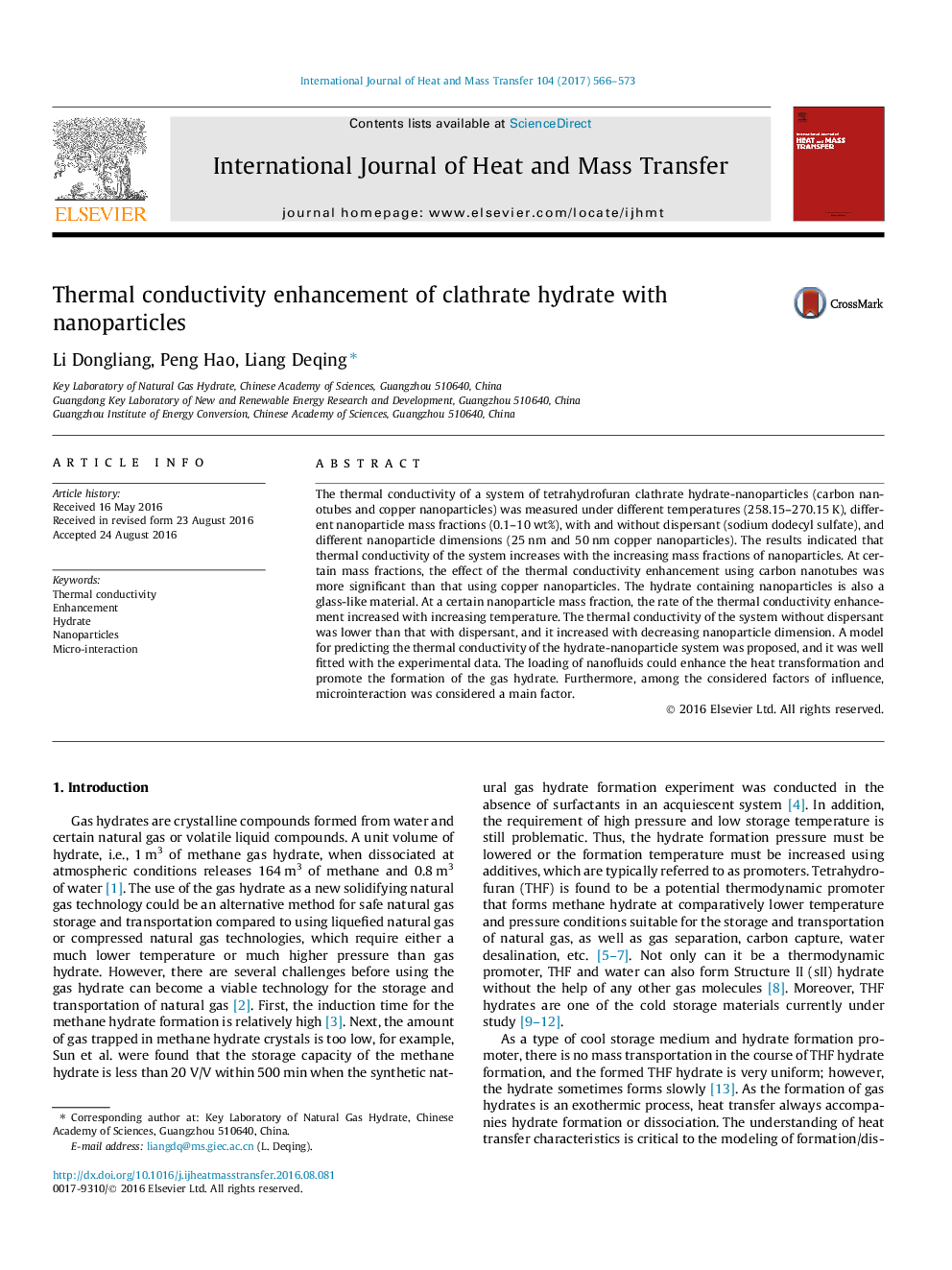| Article ID | Journal | Published Year | Pages | File Type |
|---|---|---|---|---|
| 7054920 | International Journal of Heat and Mass Transfer | 2017 | 8 Pages |
Abstract
The thermal conductivity of a system of tetrahydrofuran clathrate hydrate-nanoparticles (carbon nanotubes and copper nanoparticles) was measured under different temperatures (258.15-270.15Â K), different nanoparticle mass fractions (0.1-10Â wt%), with and without dispersant (sodium dodecyl sulfate), and different nanoparticle dimensions (25Â nm and 50Â nm copper nanoparticles). The results indicated that thermal conductivity of the system increases with the increasing mass fractions of nanoparticles. At certain mass fractions, the effect of the thermal conductivity enhancement using carbon nanotubes was more significant than that using copper nanoparticles. The hydrate containing nanoparticles is also a glass-like material. At a certain nanoparticle mass fraction, the rate of the thermal conductivity enhancement increased with increasing temperature. The thermal conductivity of the system without dispersant was lower than that with dispersant, and it increased with decreasing nanoparticle dimension. A model for predicting the thermal conductivity of the hydrate-nanoparticle system was proposed, and it was well fitted with the experimental data. The loading of nanofluids could enhance the heat transformation and promote the formation of the gas hydrate. Furthermore, among the considered factors of influence, microinteraction was considered a main factor.
Related Topics
Physical Sciences and Engineering
Chemical Engineering
Fluid Flow and Transfer Processes
Authors
Li Dongliang, Peng Hao, Liang Deqing,
